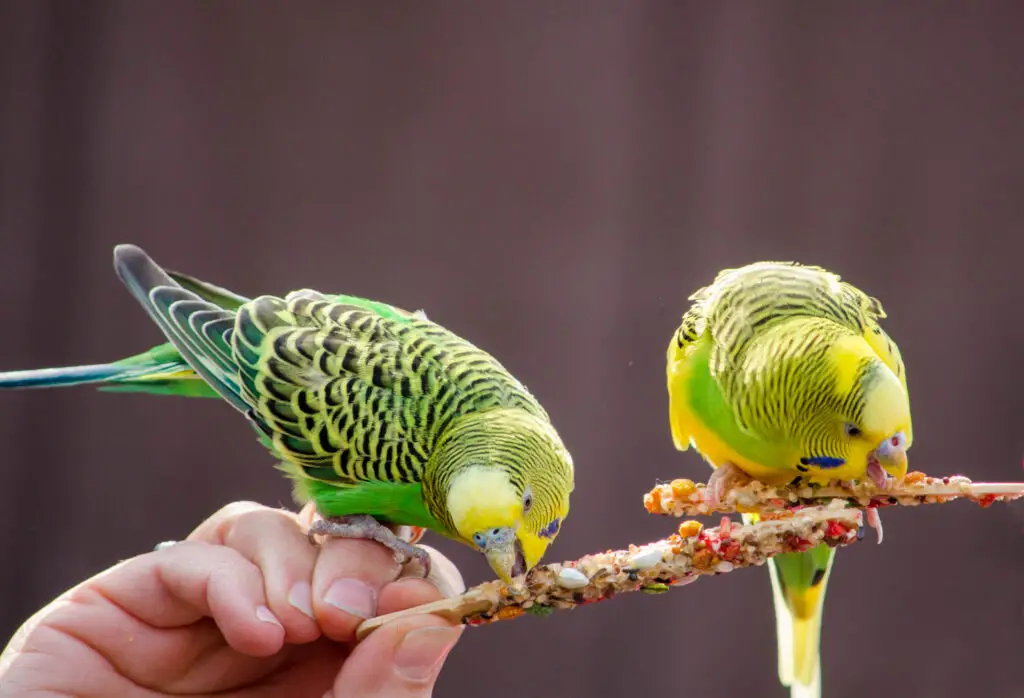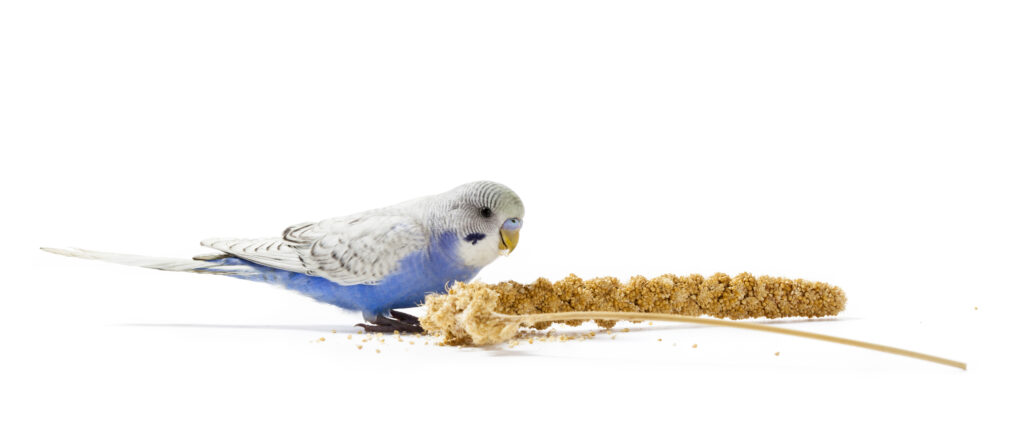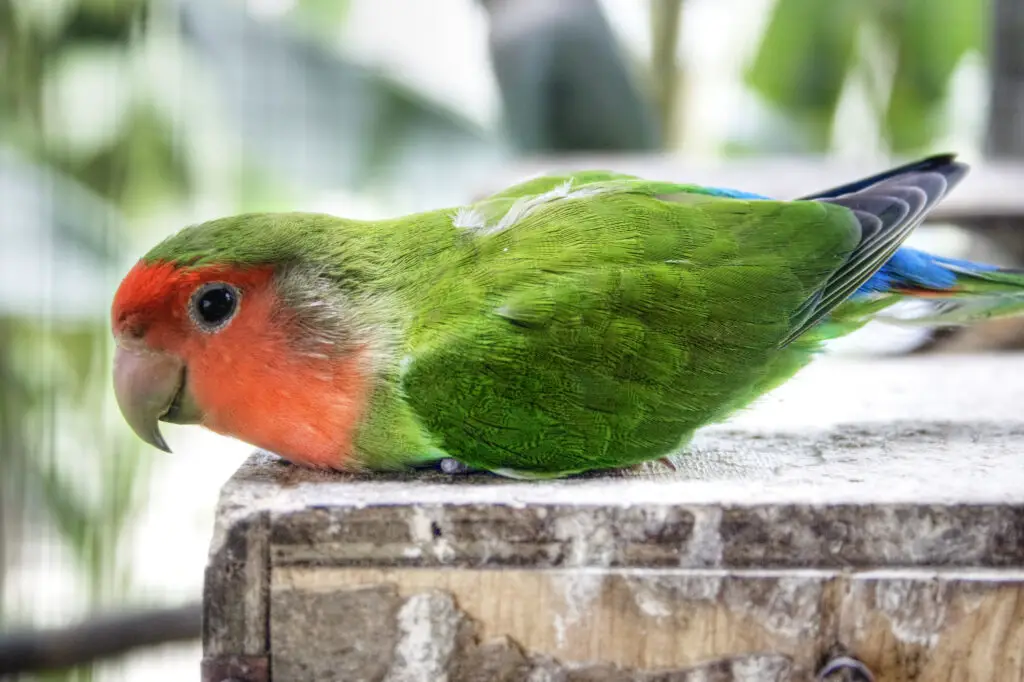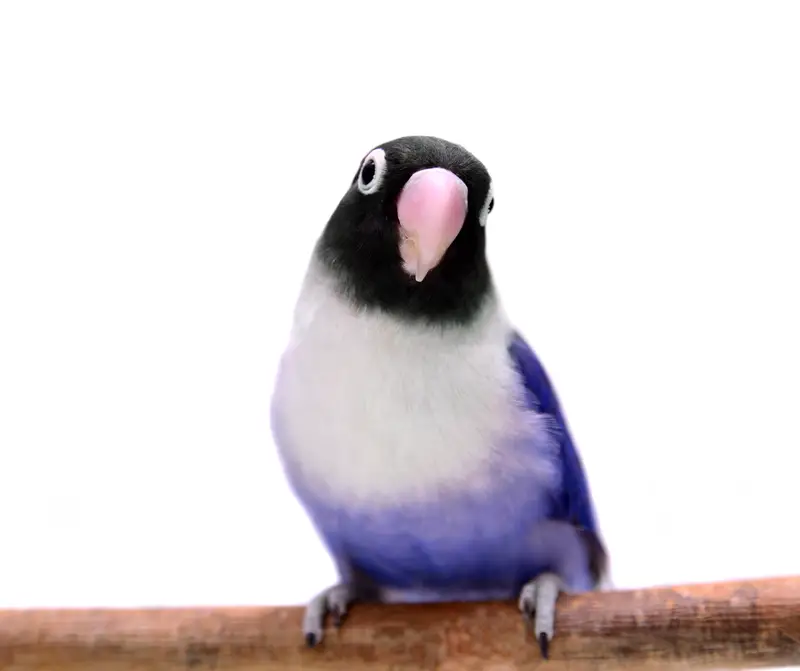Parakeet Care 101: Unlock the Secrets with our Expert Tips and Advice

Why Parakeets make great pets
Are you feeling blue? Or maybe a little green? If so, you might want to consider adopting a parakeet! These colorful little birds are native to Australia and nearby islands, and have been popular pets for centuries. In fact, the ancient Greeks and Romans kept parakeets as pets, and they were even mentioned in some of Shakespeare’s plays!
Parakeets, also known as budgerigars, are small, friendly birds that make great companions for both adults and children. They come in a variety of colors, from bright green to pastel blue, and can even mimic human speech if trained properly. Plus, they’re relatively low-maintenance pets, as long as you provide them with a suitable home, a healthy diet, and plenty of toys and activities to keep them entertained.
So if you’re looking for a pet that’s colorful, social, and fun, a parakeet might be just the thing for you! Whether you’re a seasoned bird owner or a first-time pet parent, parakeets are a great choice for anyone who wants a cheerful, chatty companion to brighten up their day.
How to select the right parakeet for your home
With so many different types of parakeets out there, how do you choose the right one for your home? Well, the first thing to consider is age. If you want a parakeet that’s already trained and comfortable with humans, you might want to opt for an adult bird. But if you’re up for a challenge and want to train your parakeet yourself, a young bird might be the way to go.
Another important factor to consider is sex. Male and female parakeets can have slightly different personalities, so it’s worth thinking about what you want in a pet. Males are generally more talkative and playful, while females can be more reserved and independent. Of course, this is just a generalization, and every parakeet is unique – so it’s always a good idea to spend some time with a bird before you adopt them.
Personality is also a key consideration when choosing a parakeet. Do you want a bird that’s outgoing and friendly, or one that’s more laid-back and relaxed? Some parakeets are very social and love to interact with their owners, while others prefer to spend time alone or with other birds. So think about your own lifestyle and what kind of pet would be the best fit for you and your family.
At the end of the day, choosing a parakeet is all about finding the right match for your home and your personality.

How to set up a suitable home
Ah, home sweet home! Even for our feathered friends, having a cozy and comfortable space to call their own is key to a happy and healthy life. So, if you’re bringing home a parakeet, it’s important to create a suitable environment for them to live in. First things first: let’s talk cage size. Parakeets are active birds and need plenty of space to fly and play, so a cage that’s at least 18 inches wide, 18 inches deep, and 24 inches tall is a good place to start. Of course, the bigger the cage, the better – so if you have the space and budget, consider investing in a larger enclosure.
When it comes to bedding, there are a few different options to choose from. Some people prefer to use newspaper or paper towels as a lining for the bottom of the cage, while others opt for bird-specific bedding made from materials like corn cob or recycled paper. Whatever you choose, make sure to clean the cage regularly to prevent bacteria buildup and keep your parakeet healthy. And don’t forget to add some perches and toys to keep your bird entertained and stimulated – parakeets love to climb, swing, and play, so give them plenty of opportunities to do so!
Selecting the best food and treats
It’s time to talk about everyone’s favorite topic: food! And for your parakeet, a healthy and varied diet is key to their well-being. So, what should you be feeding your feathered friend? Let’s start with the basics. Parakeets need a mix of seeds, pellets, and fresh fruits and veggies to stay healthy and happy. Seeds are a great source of protein and fat, while pellets provide a balanced mix of vitamins and minerals. And when it comes to fresh produce, think colorful and nutrient-dense: leafy greens like spinach and kale, crunchy veggies like carrots and bell peppers, and juicy fruits like apples and strawberries.
Of course, treats are also an important part of your parakeet’s diet – after all, who doesn’t love a little snack now and then? Just make sure to keep treats in moderation, as too many can lead to weight gain and other health issues. Good options for treats include millet sprays, cuttlebones, and pieces of cooked egg or chicken. Also, provide your parakeet with fresh water every day – just like us, birds need to stay hydrated to stay healthy and happy!

Hydration, bathing and grooming
Now It’s time to get squeaky clean! Just like us humans, parakeets need to stay clean and hygienic to keep their feathers looking fabulous. And that means making sure they have access to clean and fresh water at all times. But how can you ensure that your parakeet’s water stays clean and healthy? One easy tip is to change the water every day, and make sure to clean the water dish regularly to prevent bacteria buildup. And if your parakeet likes to splash around and make a mess (as many do!), consider investing in a water bottle that attaches to the cage – this can help prevent spills and keep the water fresher for longer.
Of course, it’s not just about water – grooming and bathing are also important for your parakeet’s hygiene. Parakeets are known for their love of preening and grooming themselves, but you can also help them out by providing a shallow dish of water for them to splash around in. Some parakeets even enjoy taking a gentle misting from a spray bottle! And when it comes to beak and nail maintenance, a cuttlebone or mineral block can be a helpful addition to your parakeet’s cage.
Behavior and training
So how do you turn this little ball of feathers into a fully-fledged member of the family? The answer lies in behavior and training! First things first: understanding your parakeet’s behavior is key to forming a strong bond with them. Parakeets are social animals and crave attention and interaction, so spending time with your feathered family member every day is a great place to start. Observe their body language and vocalizations to get a sense of their moods and needs, and provide plenty of toys and activities to keep them stimulated and happy. And if you’re struggling to decode your parakeet’s behavior or need help with training, don’t worry – there are plenty of resources out there to help you out!
One great place to start is by finding a reputable avian veterinarian or bird behaviorist in your area. These professionals can provide expert advice on everything from diet and health to behavior and training, and can help you develop a personalized plan for working with your parakeet. You can also find plenty of training resources online, from YouTube tutorials to online forums and discussion boards. And don’t forget to reach out to other parakeet owners – sometimes the best advice comes from those who have been in your shoes before!

Common Health problems, symptoms and how to prevent them
Let’s talk about everyone’s favorite topic: health and wellness! Okay, maybe not everyone’s favorite, but it’s definitely important when it comes to our parakeet pals. Like any pet, parakeets can experience health issues from time to time. But fear not – by staying informed and proactive, you can help keep your feathered friend feeling their best. Some common health problems in parakeets include respiratory infections, mites, and fatty liver disease. Symptoms to watch out for include sneezing, coughing, lethargy, and changes in appetite or behavior. If you notice any of these signs, it’s important to get in touch with your local veterinarian as soon as possible – early intervention can often make a big difference in treatment outcomes!
Prevention is also key when it comes to parakeet health. Make sure your bird has access to fresh and clean water at all times, and provide a balanced diet with plenty of fruits, veggies, and healthy treats (although treats we still keep to a minimum!). Regular cage cleaning and disinfecting can also help keep germs at bay. And if you’re ever unsure about your parakeet’s health, don’t hesitate to reach out to a professional for guidance as someone like your local veterinarian can be a massive help!
Noise level, lifespan, and compatibility with other pets
Ah, the common concerns – we all have them, especially when it comes to bringing a new pet into our homes. So, let’s address some of the most frequently asked questions (FAQs) and concerns about parakeets!
First up: noise level. Parakeets are known for their chirpy and chatty personalities, so it’s no surprise that they can make a bit of noise from time to time. However, with proper training and socialization, you can help your parakeet learn when it’s appropriate to be vocal and when it’s time to quiet down. And don’t worry – as long as you’re not living in a library, the noise level is usually manageable!
Next up: lifespan. Parakeets can live up to 10 years or more with proper care and attention. That’s a pretty long-term commitment, but we promise the joy and companionship your parakeet will bring to your life is well worth it!
Finally, compatibility with other pets: While it’s always important to introduce new pets to each other slowly and under supervision, parakeets can generally get along well with other animals in the home. Just make sure that your parakeet has a safe and secure place to retreat to if they ever feel uncomfortable or threatened.

Mental Stimulation with toys, perches, and other accessories.
Who doesn’t love a good toy? And when it comes to our feathered friends, toys are an essential part of keeping them happy and mentally stimulated. Luckily, there are plenty of fun and quirky options out there for your parakeet to enjoy! From swinging perches to colorful chew toys, there’s no shortage of ways to keep your birdie entertained.
But toys aren’t just for fun – they also serve an important purpose in preventing boredom and promoting healthy behavior. Providing a variety of toys and accessories can help prevent destructive behaviors like feather plucking or excessive screeching, and can encourage your parakeet to engage in natural behaviors like foraging and exploring.
Breeding and Genetics
Well, well, well, it looks like we’re getting into the nitty-gritty of parakeet parenthood! Breeding and genetics can be a fascinating and rewarding aspect of bird ownership, but it’s important that you do your research and make sure you’re prepared for the responsibility.
First up: determining the sex of your bird. Now, we know what you’re thinking – “But my parakeet doesn’t wear pants, how can I tell?” Well, luckily there are a few tricks you can use to figure out whether your bird is a boy or a girl. One method involves looking at the color of the ‘cere’ – the fleshy part above the beak. Males typically have a blue ‘cere’, while females have a brown or tan ‘cere’. Of course, this method isn’t foolproof, so if you’re serious about breeding your parakeets, it’s a good idea to invest in a DNA test to determine their sex with certainty.
Once you’ve got the sex sorted out, it’s time to start thinking about breeding. Breeding parakeets can be a rewarding experience, but it’s important to keep in mind that it also comes with a lot of responsibility. You’ll need to make sure your birds have a suitable nesting area, are receiving proper nutrition and care, and are being monitored closely for any signs of illness or distress. And of course, it’s crucial to ensure that any offspring are going to good homes where they’ll receive the same love and care you’ve provided for their parents.

What Parakeets sounds mean
The sweet sounds of parakeets – there’s truly nothing quite like it! If you’re a parakeet parent, you’re probably familiar with the wide range of sounds your feathered friend can make. From cheerful chirping to ear-piercing squawks, parakeets certainly know how to make their presence known. But what do all these different sounds mean? Well, let’s break it down.
Chirping is probably the most common sound you’ll hear from your parakeet, and it’s a good sign that they’re happy and content. Chirping is often accompanied by gentle head-bobbing and fluffed-up feathers, and it’s a surefire way to tell that your parakeet is feeling good.
Squawking, on the other hand, is usually a sign of distress or annoyance. If your parakeet is squawking loudly and repeatedly, they may be feeling threatened or uncomfortable in their environment.
Finally, we can’t forget about parakeets’ unique ability to mimic human speech! While not all parakeets will learn to talk, some are quite skilled at picking up words, phrases or sounds. If you’re hoping to train your parakeet to talk, it’s important to be patient and consistent in your efforts – and don’t be surprised if your bird ends up with a bit of a quirky accent!
The different colors and varieties of Parakeets
Parakeets come in all sorts of shapes, sizes, and colors – it’s like a rainbow exploded in the bird aisle! From bright blues and greens to soft yellows and whites, there’s a parakeet out there to suit every taste. But did you know that there are actually many different varieties of parakeets, each with their own unique characteristics? Let’s take a closer look!
First up, we have the classic budgerigar, also known as the English parakeet. These little guys are native to Australia and come in a variety of colors, including blue, green, yellow, and white.
Next, we have the American parakeet, also called the Pacific parakeet, which is known for its bright green plumage and playful personality. Other popular parakeet varieties include the Indian ring-necked parakeet, which boasts a stunning array of colors including blue, green, yellow, and purple, and the lineolated parakeet, which is prized for its gentle nature and beautiful plumage. No matter what variety of parakeet you choose, one thing is for sure – they’re sure to bring a splash of color and personality to your home!

Parakeet Anatomy
Have you ever wondered what’s going on inside your parakeet’s tiny little body? Well, wonder no more! Let’s take a closer look at parakeet anatomy;
Parakeets may be small, but their bodies are incredibly complex. Like all birds, parakeets have lightweight, hollow bones that allow them to fly and move quickly. They also have a unique respiratory system that allows them to extract oxygen more efficiently than mammals. And let’s not forget about those beaks – parakeets have strong, curved beaks that they use for everything from cracking open seeds to preening their feathers. Understanding parakeet anatomy can help you better care for your birdie buddy and recognize any potential health issues early on.
Travelling with your Parakeet
Whether you’re taking your parakeet on a cross-country road trip or jet-setting to a tropical paradise, traveling with a parakeet requires some extra preparation. But don’t worry, we’ve got you covered with these tips!
First, make sure your parakeet has a comfortable and secure carrier for travel. You don’t want your little buddy flying around the car or plane and causing a feathered frenzy. Plus, a cozy carrier can help reduce stress for your parakeet during the journey. You can even add some familiar toys or blankets to the carrier to make it feel like home.
If you’re flying with your parakeet, check with the airline ahead of time to see what their specific regulations and requirements are for traveling with a pet bird. Some airlines may require a health certificate or specific types of carriers, especially if you’re travelling to a different country. And don’t forget to pack some extra food and water for your parakeet in case of delays or layovers. With a little bit of planning, you and your parakeet can take to the skies with ease.
If you’re hitting the road, make sure your parakeet’s carrier is securely fastened and won’t tip over during the drive. And if you’re stopping for a break, make sure to give your parakeet some time out of the carrier to stretch their wings and get some fresh air. And of course, always supervise your parakeet during rest stops to ensure their safety and leave the car going to keep that aircon flowing in hot or humid conditions!
Other resources for further reading
We always want to help our readers with information on the best care tips to help them look after their feathered family members. here are some additional resources to help you on your journey to find everything you need to look after these beautiful animals which include communities that also care for them as much as we do;
The American Federation of Aviculture: This organization provides information and resources for bird owners and enthusiasts, including a directory of local bird clubs and avian veterinarians.
Parakeet Handbook by Immanuel Birmelin: This comprehensive book covers all aspects of parakeet care, from housing and feeding to breeding and training.
Parakeet Care: The Complete Guide to Caring for and Keeping Parakeets as Pets by Roger Rodendale: This informative book provides practical advice on caring for parakeets, including tips on training and behavior.
The Budgerigar Society: This UK-based organization promotes the welfare and breeding of budgerigars, including information on caring for and breeding parakeets.
The National Parrot Rescue and Preservation Foundation: This nonprofit organization works to rescue and rehabilitate parrots and other exotic birds, and provides educational resources for bird owners and enthusiasts.
The Parrot Society of Australia: This organization promotes the welfare and breeding of parrots in Australia, and provides information on caring for parakeets and other parrot species.

Final Thoughts on Parakeet Care
In conclusion, owning a parakeet can be a fun and rewarding experience for pet owners. With the right care and attention, these colorful and intelligent birds can live long and healthy lives. From selecting the right parakeet for your home to providing a suitable living environment, feeding and nutrition, water and hygiene, behavior and training, health and wellness, toys and enrichment, parakeet sounds, breeding and genetics, parakeet colors and varieties, parakeet anatomy, and even traveling with your feathered friend, there is a wealth of information available to ensure that you and your parakeet have the best possible experience and lives together.
Remember to always do your research before bringing home a new pet, and never hesitate to seek out professional advice if you have any concerns or questions about your parakeet’s care. With the right knowledge and resources at your fingertips, you can provide your parakeet with a happy and healthy life full of love, companionship, and endless entertainment. So go ahead, give your parakeet a little bit of extra TLC today, and watch them thrive!




